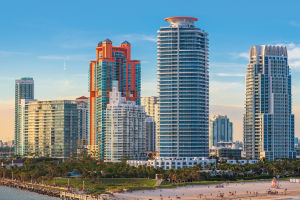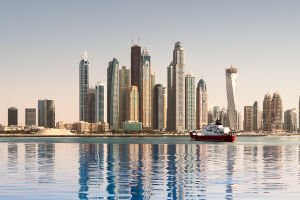Originally constructed between 1955 and 1959, the Auckland Harbour Bridge stands as New Zealand’s largest bridge, boasting the widest span and playing a crucial role in connecting Auckland and its North Shore.
The Need for a Bridge
By the mid-20th century, access to the North Shore was limited to vehicular and passenger ferries, making the construction of a bridge across Waitemata Harbour a pressing necessity. Early attempts at bridge proposals began in the 1860s, but progress was hindered by economic challenges such as the Great Depression. In the mid-1940s, Sir John Allum championed the bridge's construction, and after three Royal Commissions, the Auckland Harbour Bridge Authority was established in 1951 to oversee the project.
Constructing the Auckland Harbour Bridge
Design and Construction Process
The bridge's design was undertaken by Freeman Fox and Partners in England, with construction led by Cleveland Bridge and Dorman Long Joint Venture. Over 180 laborers from England joined the local workforce during the four-year construction period. Despite frequent strikes in 1956 and 1957, the project advanced, although tragically, four workers lost their lives. A commemorative plaque honoring them is located at Stokes Point on the North Shore.
Structure and Features
The bridge spans 1,020 meters and consists of seven spans labeled A to G. Its navigation span, B, measures 243.8 meters with a clearance of 43.3 meters at high tide. Ingenious techniques, such as floating steel pontoons to position sections of the bridge, were employed, showcasing the ingenuity and precision of the engineers.
Opening and Early Usage
The Auckland Harbour Bridge was officially opened by the Governor General, Lord Cobham, on May 30, 1959, amidst grand celebrations. Initially constructed as a toll bridge, its traffic grew rapidly, necessitating future expansions.
The Nippon Clip-Ons
Expansion of Traffic Lanes
Between 1968 and 1969, the bridge’s capacity was doubled with the addition of four lanes, nicknamed the “Nippon clip-ons,” as they were prefabricated in Japan. These lanes were built on the original piers using cutting-edge orthotropic box technology.
Fatigue Management
Challenges arose in the mid-1980s when fatigue cracks were discovered in the clip-ons. Innovative techniques, including semi-automatic welding and quality assurance procedures, were developed to address these issues, ensuring the bridge remained safe and functional.
Modern Enhancements and Features
Traffic Management
Dear Lykkers! In 1989, a moveable concrete traffic barrier was introduced, significantly improving safety and allowing tidal traffic flow, which increased the bridge’s load capacity.
Potential for Light Rail
Studies revealed that each clip-on section could accommodate a light rail line alongside light traffic, further highlighting the bridge’s versatility and importance to Auckland’s transportation network.
A Symbol of Engineering Heritage
In 1990, the bridge was recognized as a significant piece of New Zealand's engineering heritage by IPENZ’s “Engineering to 1990” project. A plaque was unveiled to commemorate its role in the nation's development.
The Auckland Harbour Bridge continues to serve as an integral part of Auckland's motorway system, reflecting a blend of historical importance and modern functionality.


